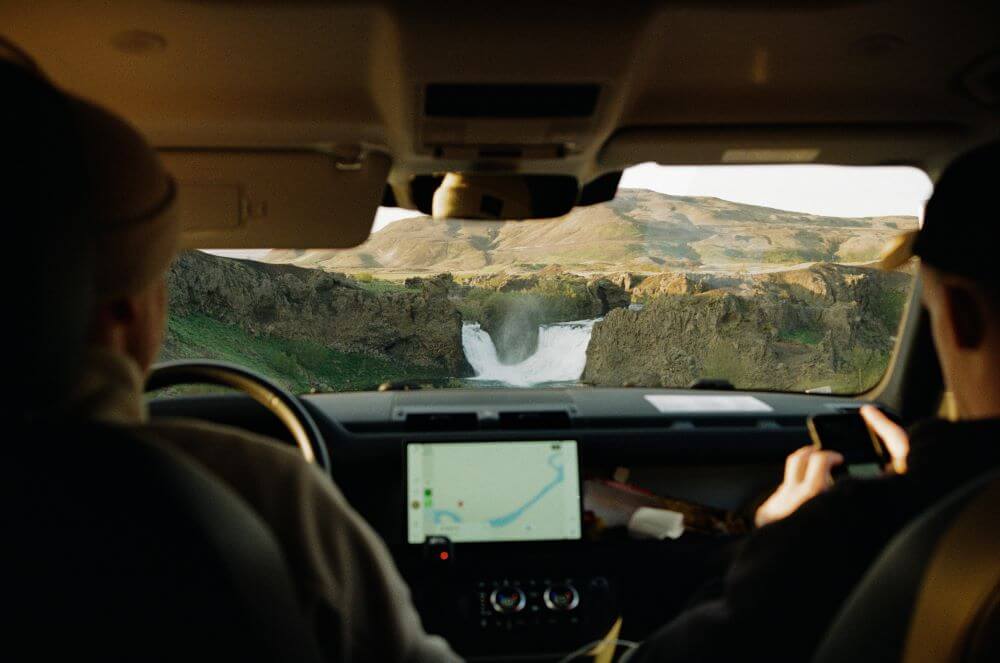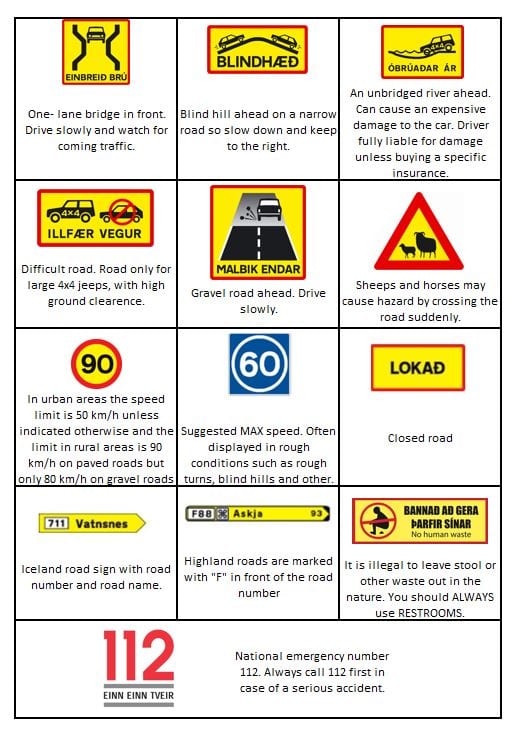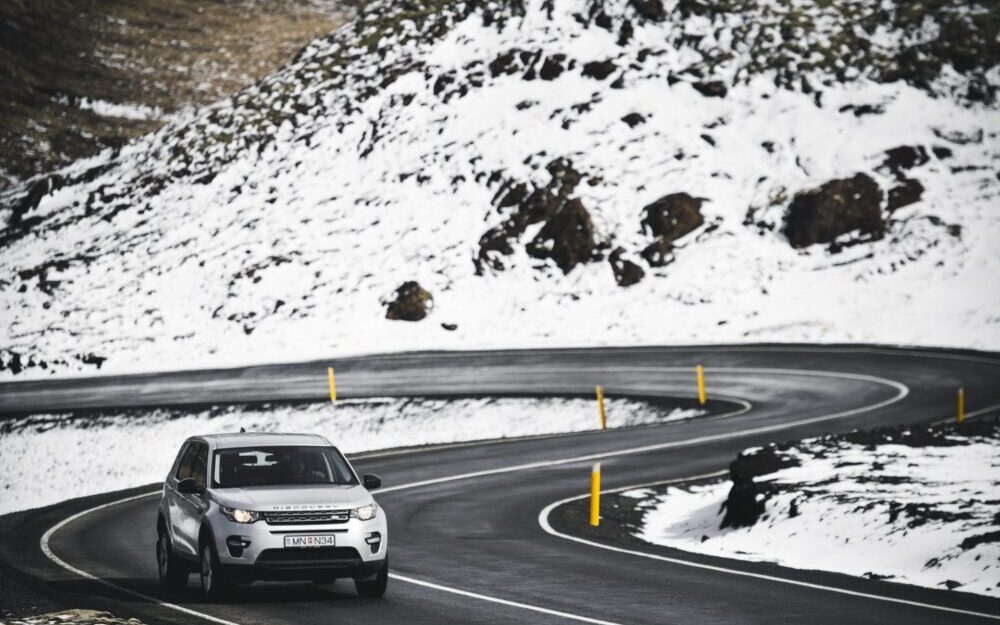
Driving in Iceland offers some of the most breathtaking landscapes on the planet. From the thundering waterfalls of the south to the serene fjords of the north, the country’s natural beauty is unmatched.
However, exploring this rugged terrain requires a bit of preparation, especially when it comes to driving. The roads in Iceland can be as varied as its landscapes, ranging from well-paved highways to challenging gravel paths. This blog aims to arm you with essential driving tips for navigating Iceland’s roads safely, ensuring your adventure is both memorable and enjoyable.
Understanding Iceland’s Road Types
Iceland’s road network can be broadly categorized into three types: the Ring Road, gravel roads, and mountain roads. The Ring Road, or Route 1, encircles the entire island and is the main thoroughfare connecting major towns and attractions. It is well-maintained and mostly paved, making it suitable for all types of vehicles. Gravel roads, on the other hand, are common in rural areas and can vary greatly in condition. They often lead to some of the country’s most remote and stunning locations. Lastly, mountain roads, or “F-roads,” are only accessible during the summer months and require a 4×4 vehicle. Understanding these road types is crucial for planning your route and ensuring your vehicle is equipped for the journey ahead.

Navigating Gravel Roads
Gravel roads in Iceland are not to be underestimated. While they unlock the door to the country’s most secluded wonders, they also pose unique challenges. Here are some tips for safe travel on gravel:
Reduce Speed: Gravel roads can be slippery and unpredictable. Lowering your speed will give you better control of the vehicle and more time to react to sudden changes in road conditions.
Maintain Distance: Keep a safe distance from the vehicle in front of you to avoid stone chips from flying into your windshield or paintwork.
Steer Gently: Abrupt steering movements can lead to skidding. If you feel the car beginning to slide, gently steer in the direction of the slide to regain control.
Check for F-roads: Some gravel roads are classified as F-roads, requiring a 4×4. Always check your route in advance to ensure your vehicle is suitable.
By following these guidelines, you can navigate Iceland’s gravel roads with confidence, reaching destinations that few travelers get to experience.
Local Traffic Laws and Regulations
Adhering to Iceland’s traffic laws is not only a matter of legal compliance but also of safety. Here are some key regulations to keep in mind:
Speed Limits: Speed limits vary depending on the road type but are generally 90 km/h on highways, 80 km/h on gravel roads, and 50 km/h in urban areas. Speed cameras are common, and fines can be hefty.
Headlight Usage: Headlights must be on at all times, day and night, throughout the year. This law helps increase visibility, given Iceland’s variable weather and light conditions.
Venturing off established roads is strictly forbidden to safeguard Iceland’s fragile ecosystem. Those who disobey this rule risk incurring substantial penalties or even facing jail time.
Respecting these rules will ensure a safe and trouble-free journey through Iceland’s stunning landscapes.

Weather Conditions and Driving
Iceland’s weather is notoriously unpredictable, with conditions that can change rapidly. This unpredictability can significantly impact driving conditions, making it essential to be prepared for anything. Here are some tips for driving in various weather conditions:
Check the Weather Forecast Regularly: Websites like the Icelandic Meteorological Office provide accurate weather updates and alerts. Make it a habit to check forecasts frequently.
Snow and Ice: In winter, roads can be icy or snow-covered. Use winter tires, drive slowly, and keep a safe distance from other vehicles. It’s also wise to have a shovel and sand or kitty litter in case you get stuck.
Rain and Fog: Reduce speed in rainy or foggy conditions to improve visibility and reaction times. Use your headlights and fog lights if you have them.
Wind: Iceland can experience strong winds that can unexpectedly push your vehicle. Be especially cautious when driving near mountains or open fields and when passing large vehicles.
Adapting to the weather is crucial for safe driving in Iceland, ensuring you enjoy your journey without unwelcome surprises.
Rural and Remote Area Driving
Driving in Iceland’s rural and remote areas allows you to experience the untouched beauty of the island. Yet, navigating these regions presents its unique set of hurdles:
Fuel Up: Gas stations can be sparse in remote areas. Always have a full tank and consider carrying an extra can of fuel.
Emergency Kit: Keep an emergency kit in your vehicle, including food, water, warm clothing, and a first aid kit.
Communication: Mobile service can be unreliable. Inform someone of your travel plans and expected return, especially if venturing into very remote areas.
Navigation: GPS can be helpful, but don’t rely on it solely. Have a detailed map of the area and know how to use it.
Taking these precautions can ensure that your drive through Iceland’s less-traveled roads is safe and enjoyable.

Conclusion
Driving in Iceland offers the freedom to explore some of the most stunning and remote landscapes on earth. By understanding the types of roads, adhering to local traffic laws, preparing for the unpredictable weather, and taking extra care in rural areas, you can ensure a safe and unforgettable journey. Remember, the key to a successful road trip in Iceland is preparation.
Equip yourself with the right knowledge and gear, and you’ll be well on your way to experiencing the majestic beauty of Iceland at your own pace. Drive safely and enjoy the adventure that awaits on Iceland’s roads.
For more interesting and practical travel advice about Iceland, please check out our blog.
Back